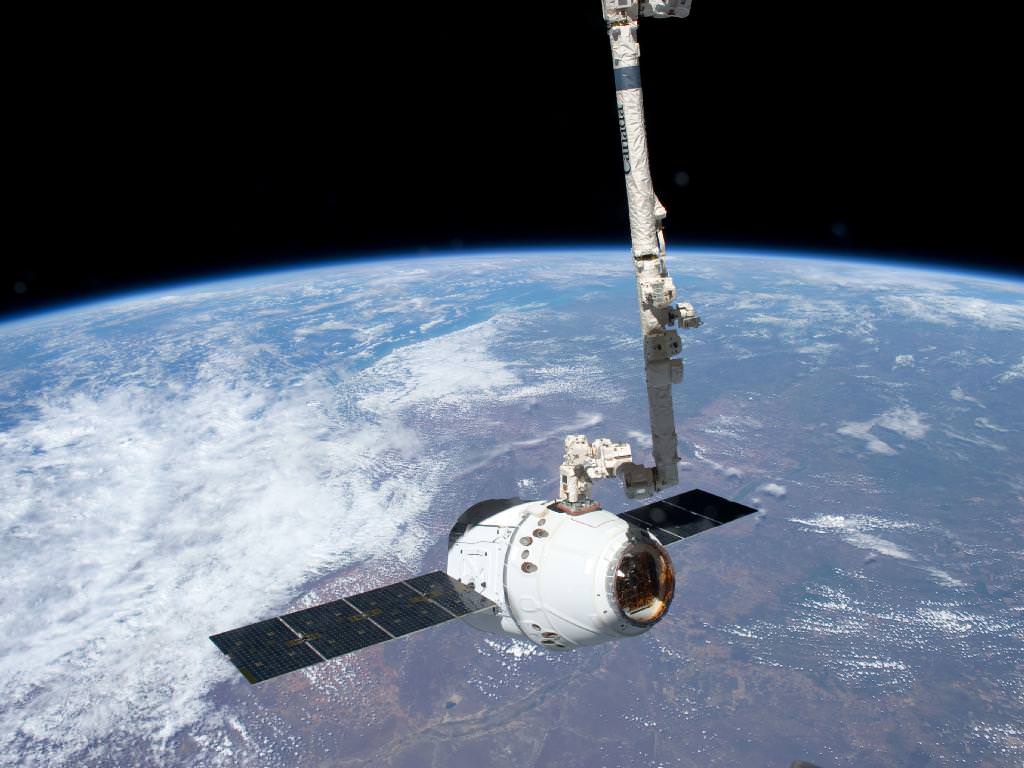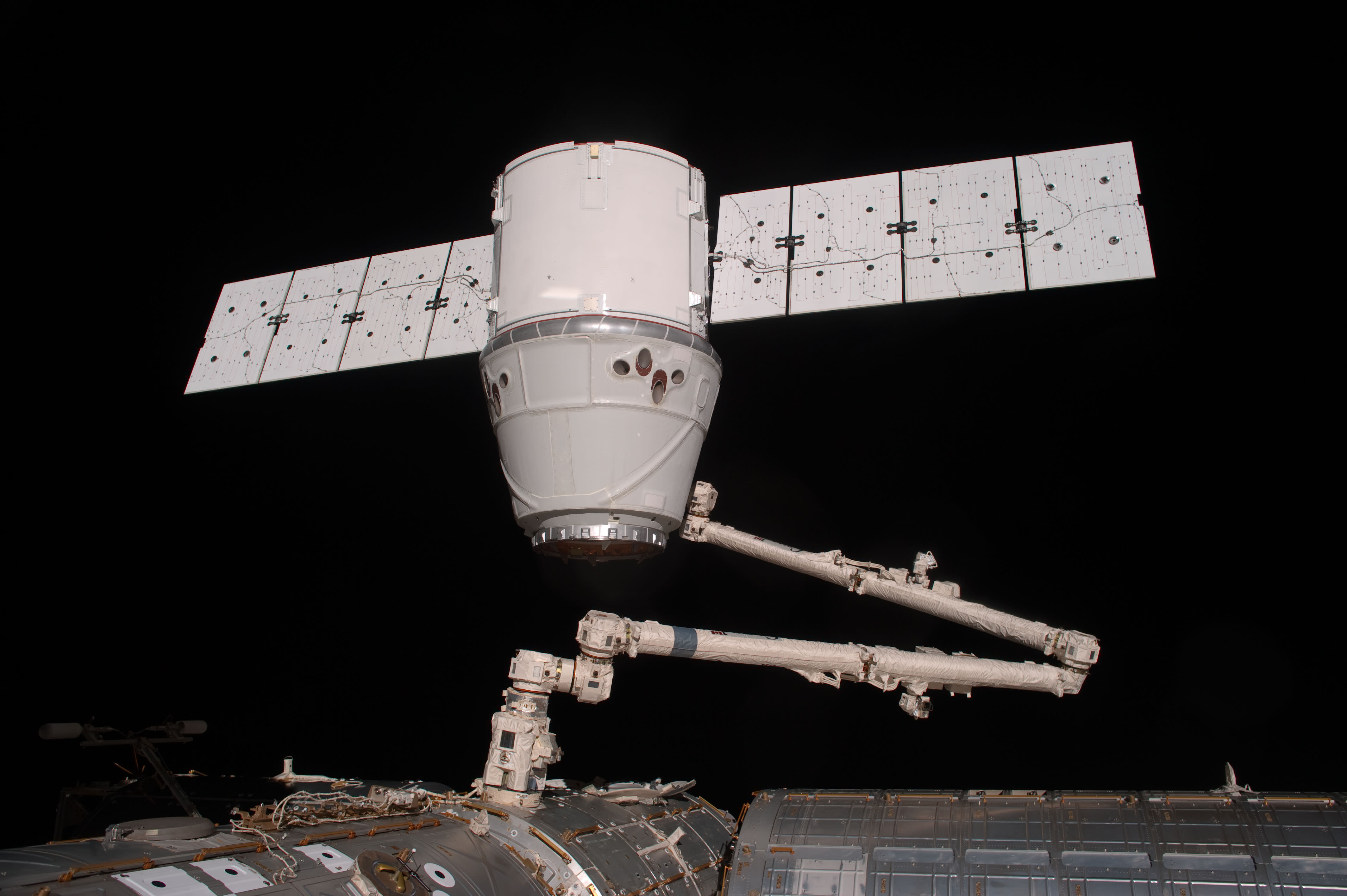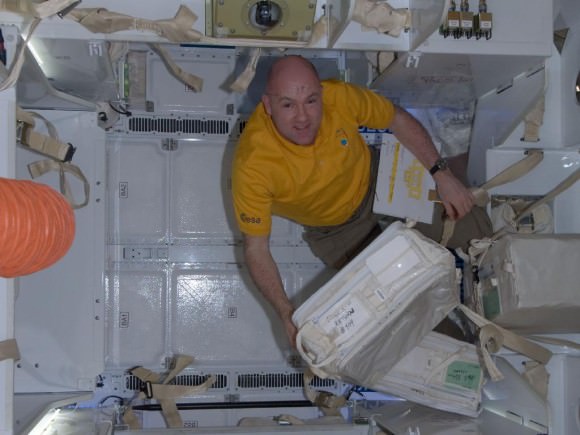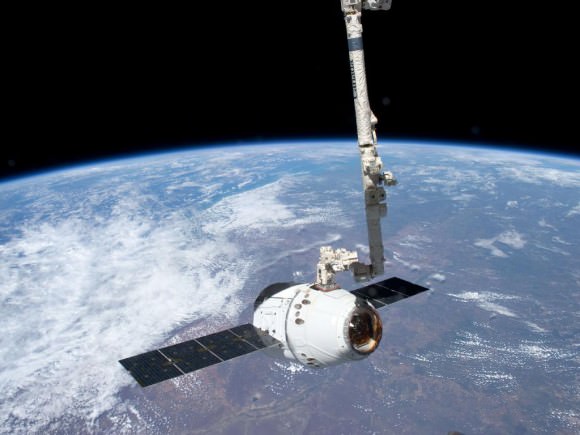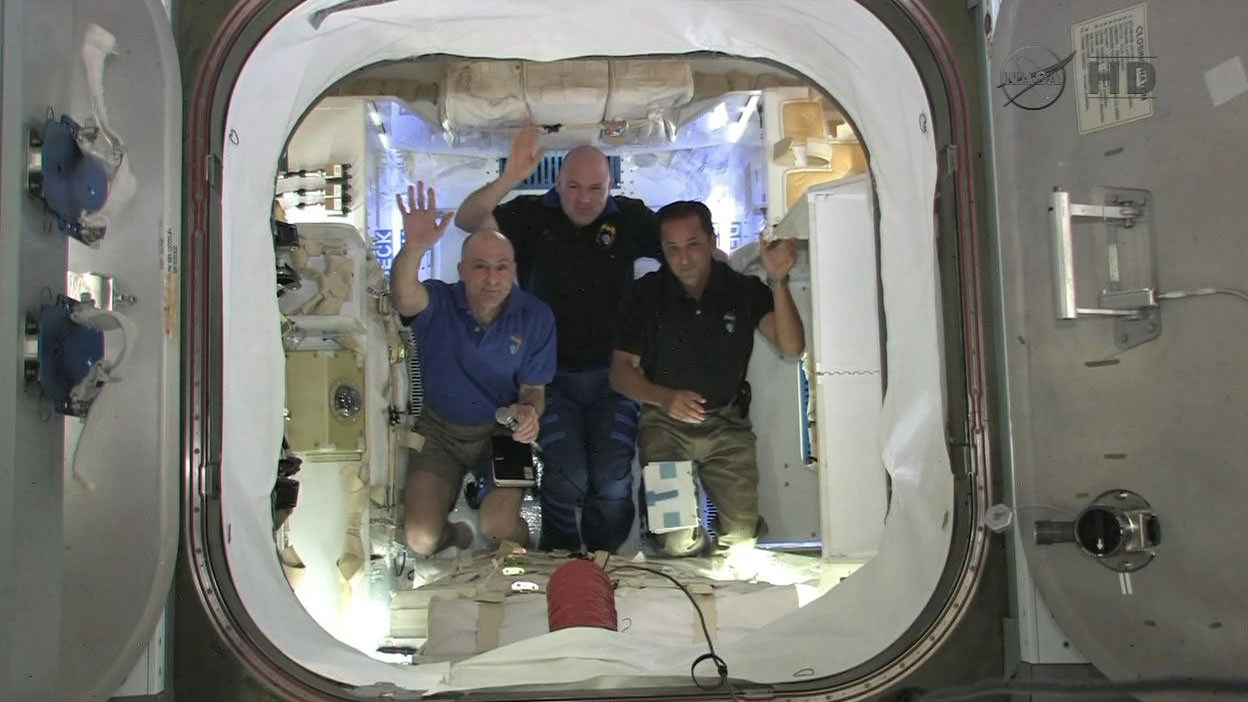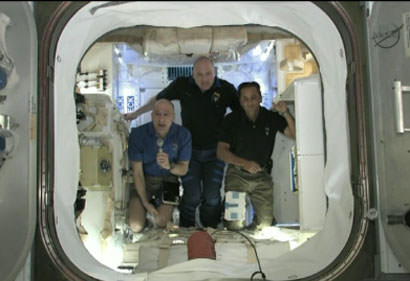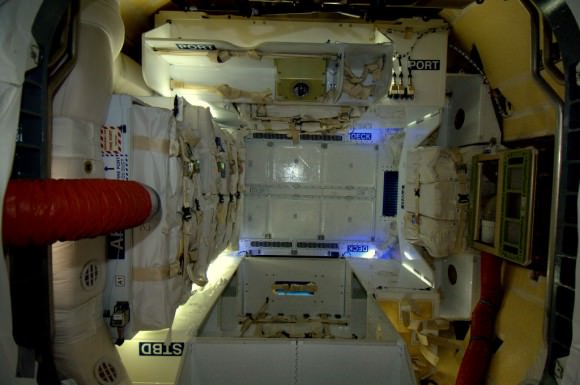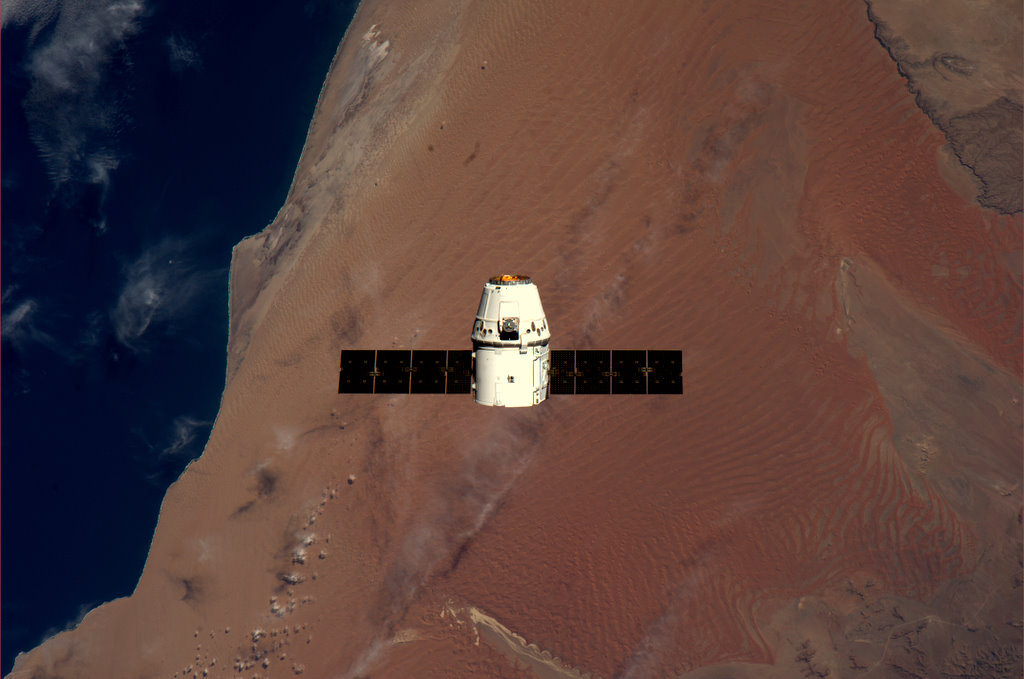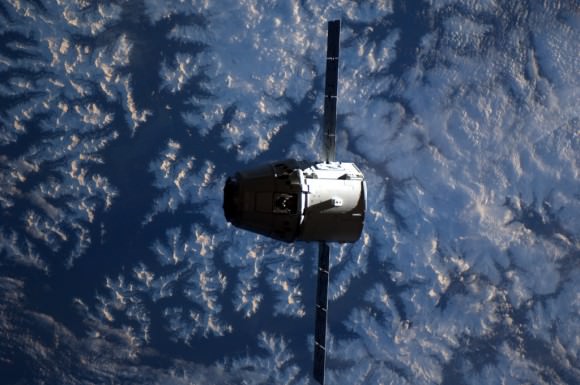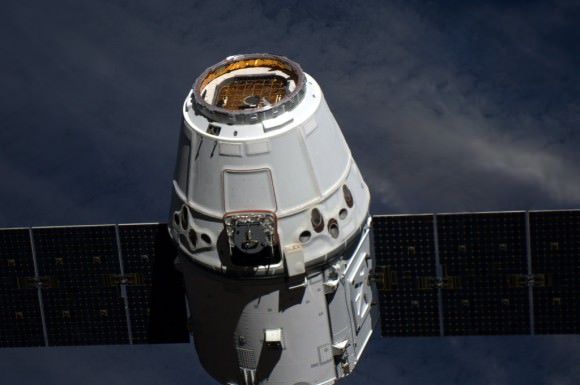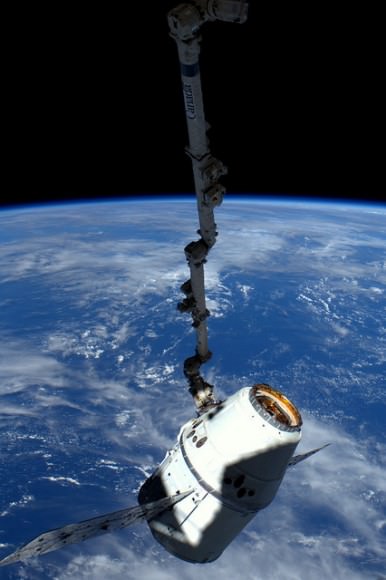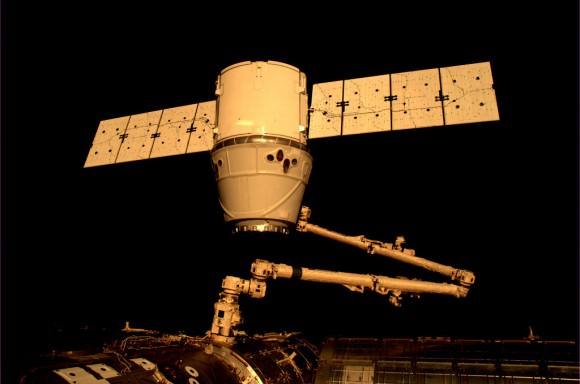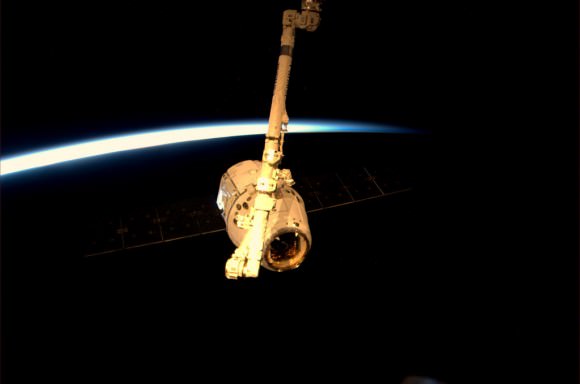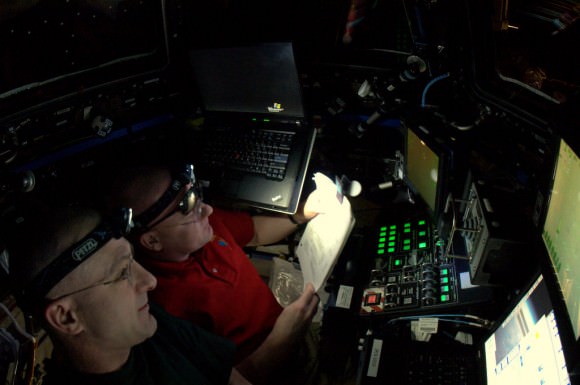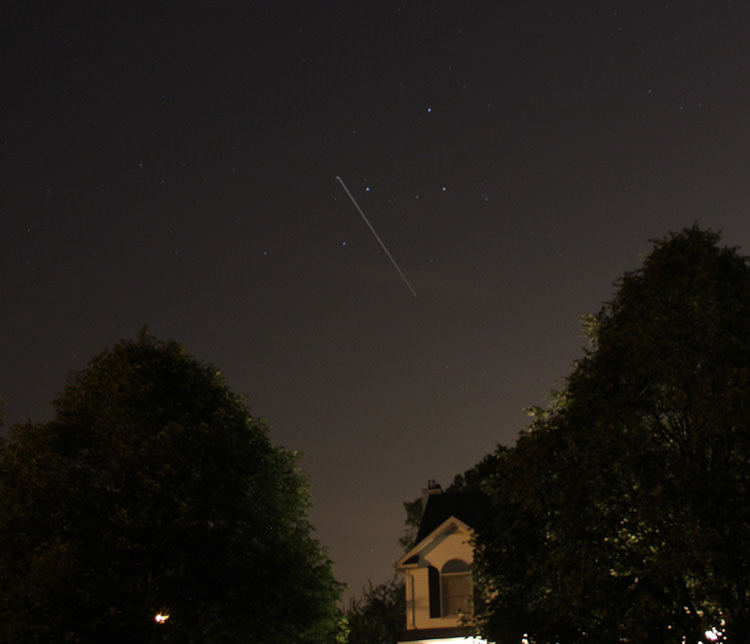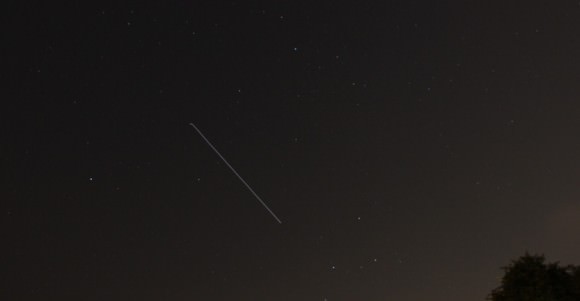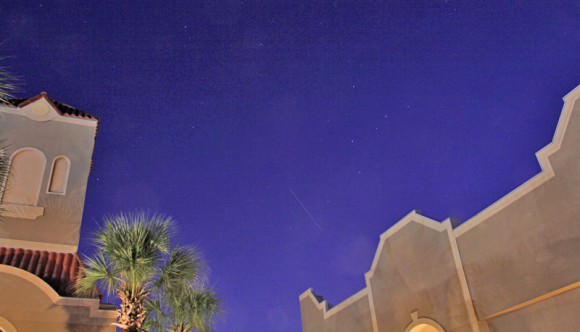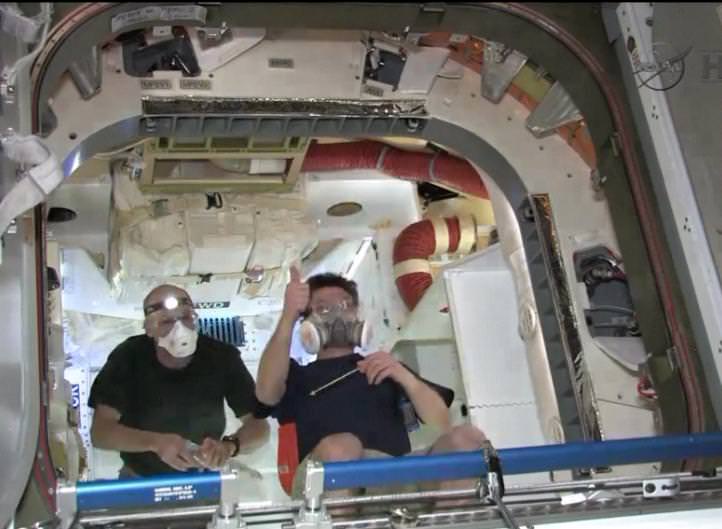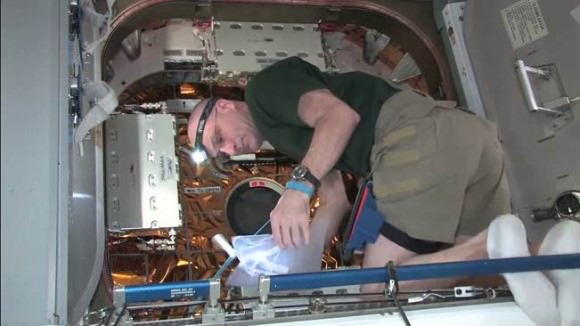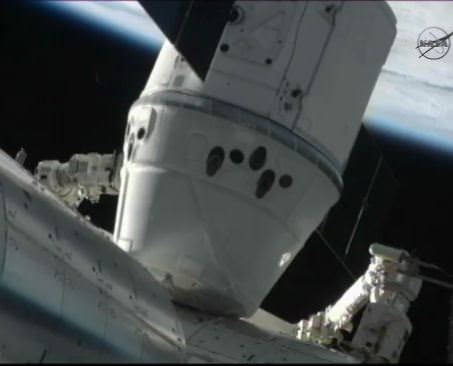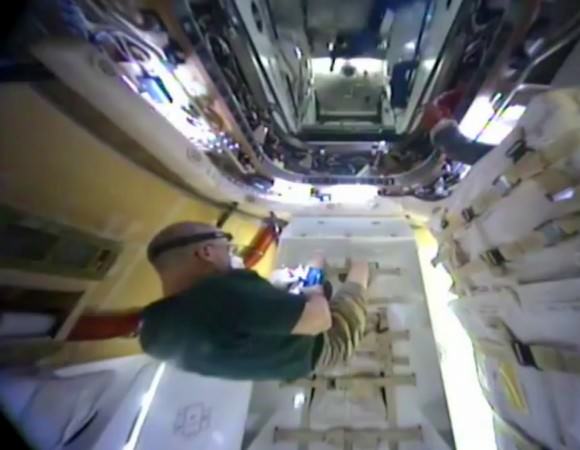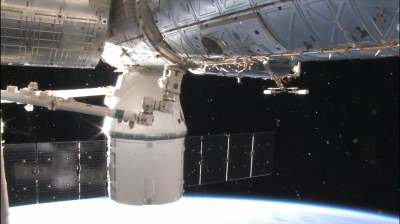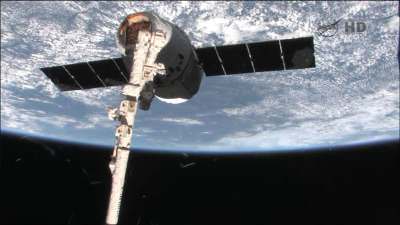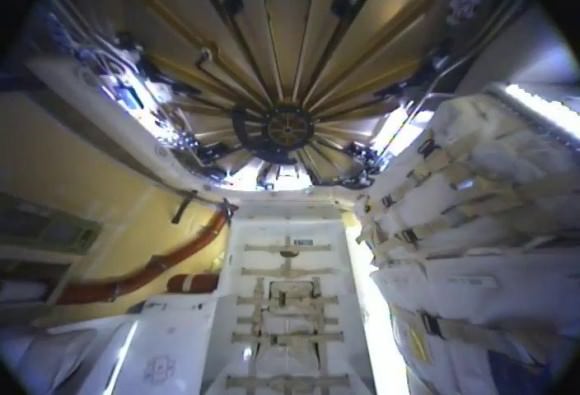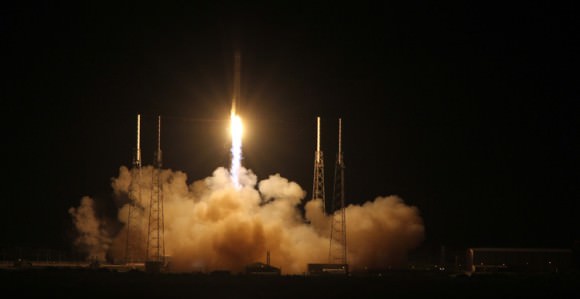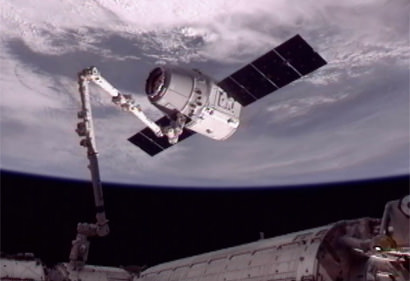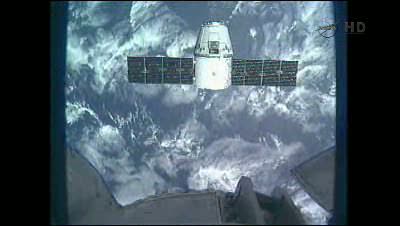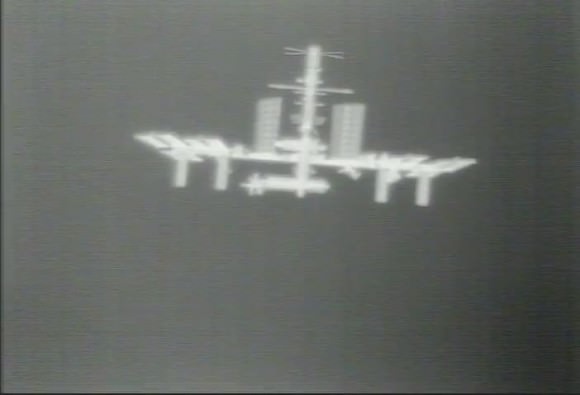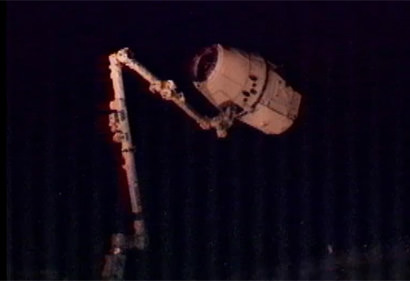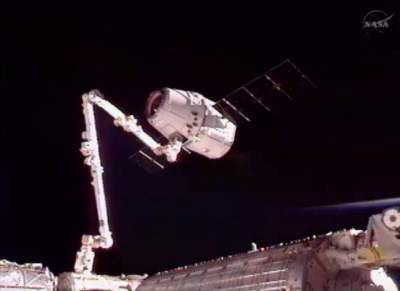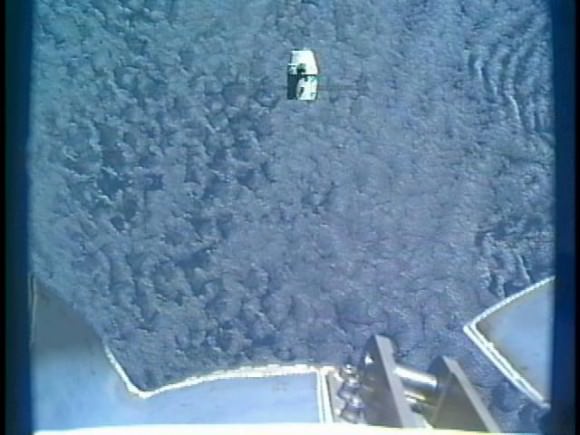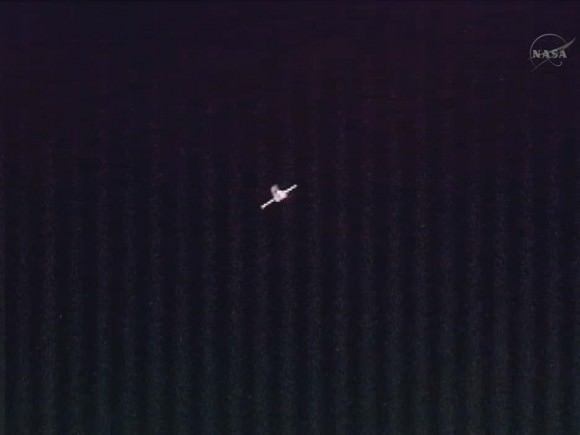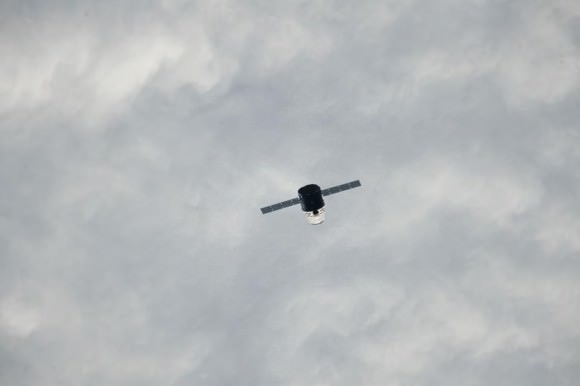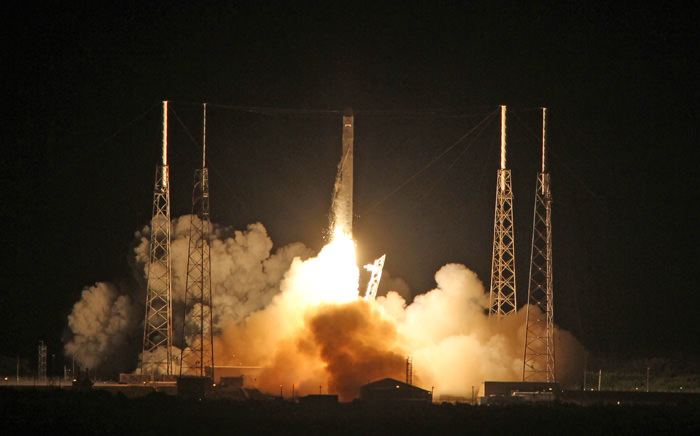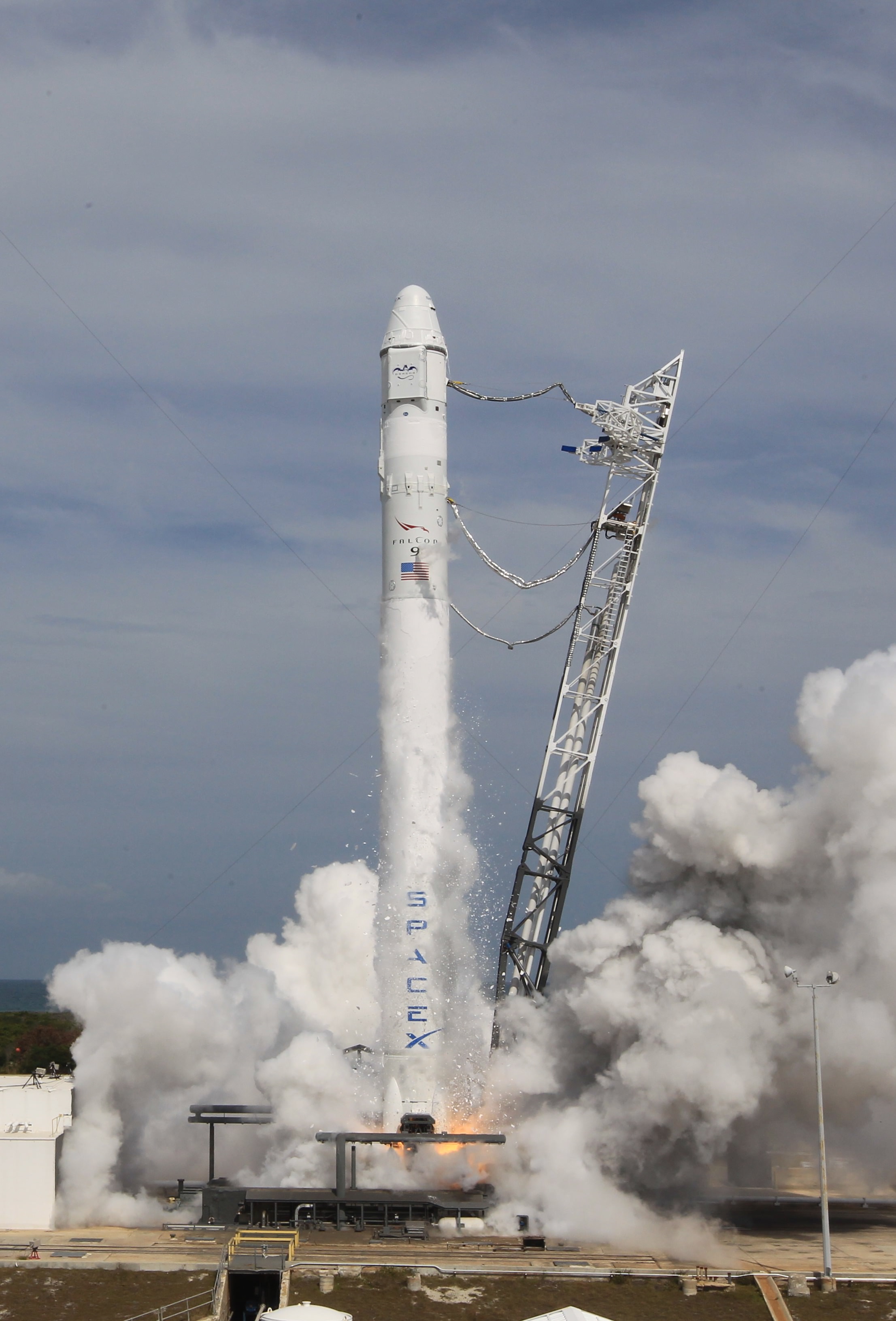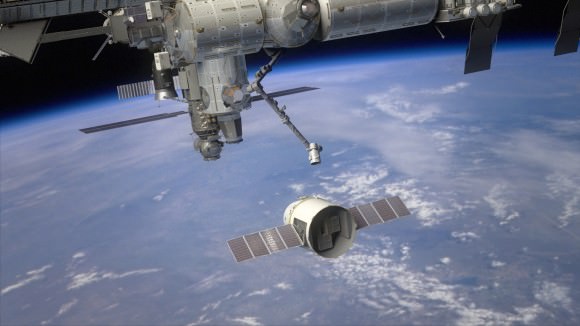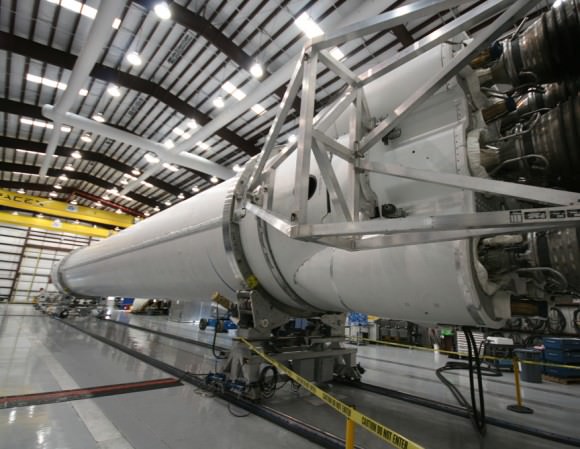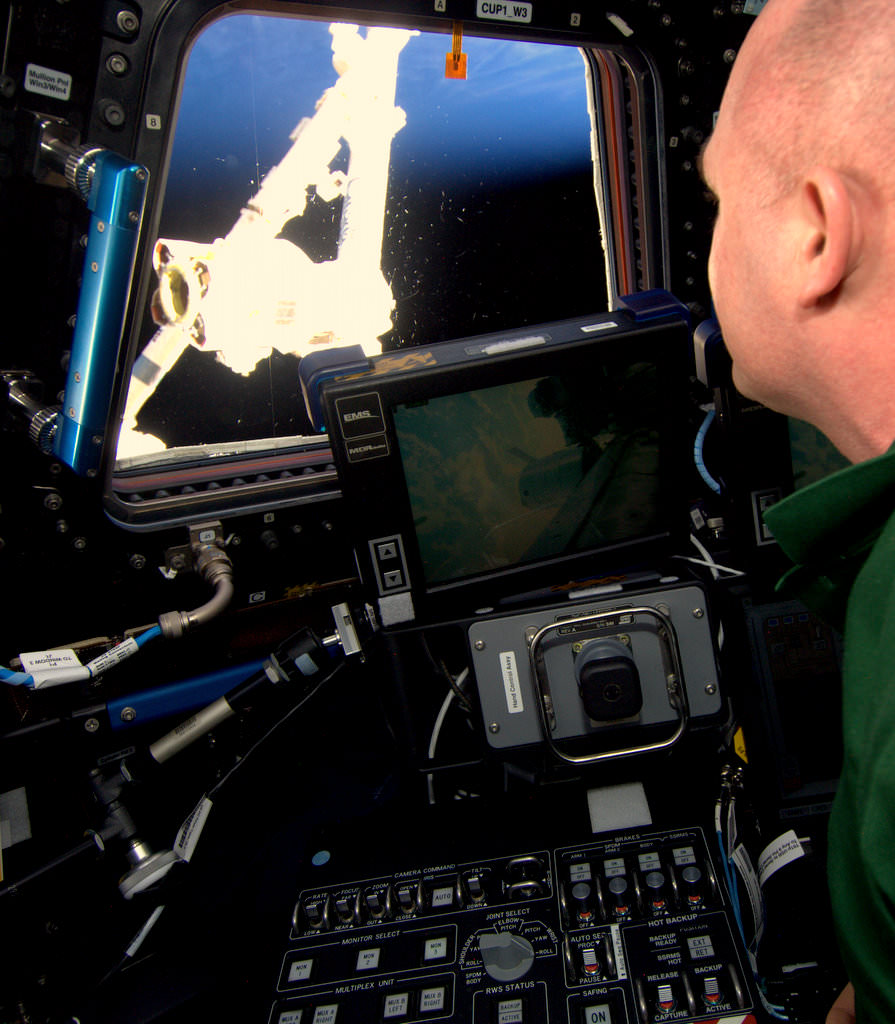[/caption]
History’s first commercial cargo ship ever to visit the International Space Station (ISS) has safely and successfully departed the orbiting lab complex after astronauts released the craft from the grip of the station’s robotic arm at 5:49 a.m. EST (949 GMT) this morning, May 31, 2012 for the return trip to Earth to conclude a precedent setting stay that fully accomplished all objectives.
“Dragon is Free !” announced Josh Byerly, a NASA spokesman at Houston Mission control a short while ago as NASA astronauts Joe Acaba and Don Pettit released the first ever private spacecraft to attach to the ISS into a free drift mode for a fiery plunge through Earth’s atmosphere and splash down in the Pacific Ocean off the coast of Baja California less than 6 hours from now.
“Everything looking safe and sound.”
The two spacecraft were some 250 miles (400 km) high above the Indian Ocean east of Africa at the moment of release and departure. Altogether, Dragon spent 5 days, 16 hours and 5 minutes mated to the station.
A minute later Dragon successfully conducted its first departure burn to back away from the massive orbiting complex followed shortly thereafter by two more short pulsed firings of the capsules thrusters. The last of the three short separation burns took place at 6:02 a.m. EDT.
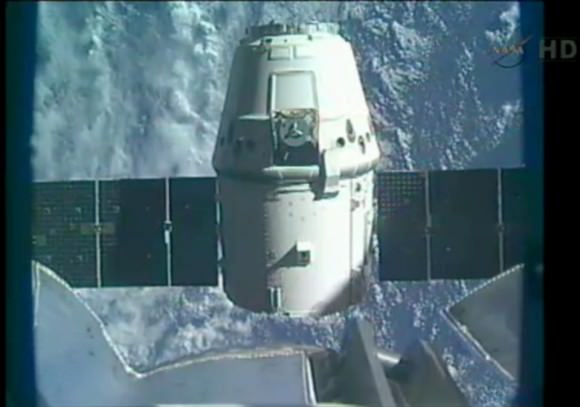
The Dragon then passed outside the imaginary 200 meter (656 ft) circular zone known as the Keep-Out-Sphere (KOS) and was placed under the exclusive control of SpaceX mission controllers with NASA control duties completed
The next major event is the de-orbit burn scheduled for 10:51 a.m. EDT which is a 100 m/sec burn lasting 9 minutes and 50 seconds. The thruster firing will send Dragon plummeting through the Earth’s atmosphere at 17000 MPH where it must survive temperatures exceeding 3000 degrees F before landing.
Earlier this morning, Acaba and Pettit unhooked the final 16 motorized bolts and latches holding Dragon firmly to the station at the common berthing mechanism and detached Dragon from the station’s Earth facing Harmony node at 4:07 a.m. EDT using the 18 m (58 ft) Canadian robot arm. The astronauts worked at robotic work stations inside the multi-windowed Cupola observation dome.
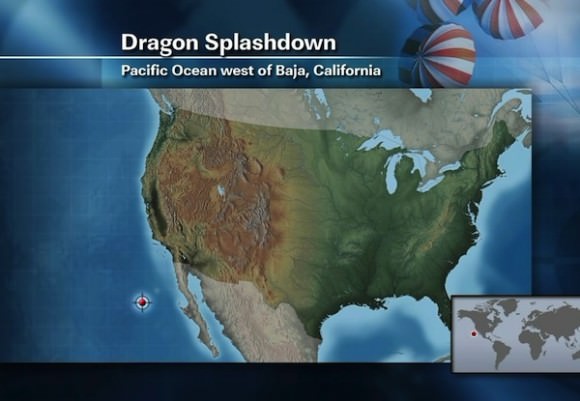
The SpaceX Dragon is now headed for a splashdown in the Pacific Ocean at 11:44 a.m. EST (1544 GMT) some 490 nautical miles southwest of Los Angeles off the West Coast of California.
SpaceX has dispatched three recovery vessels to retrieve Dragon from the ocean.
Following launch from Cape Canaveral, Florida on May 22, Dragon arrived at the ISS on May 25 and the astronauts opened the hatch on May 26 and then proceeded to unload the cargo and refill it for the return trip.
Dragon is the world’s first commercial spacecraft and was built by Hawthorne, Calif., based SpaceX Corporation, founded in 2002 by CEO and Chief Designer Elon Musk.
“This is SpaceX’s second demonstration flight under a 2006 Commercial Orbital Transportation Services (COTS) agreement with NASA to develop the capability to carry cargo to and from the International Space Station’” says SpaceX spokeswoman Kirstin Grantham.
“With the first demonstration flight, in December of 2010, Dragon became the first commercial spacecraft to orbit the Earth and safely return. During that mission SpaceX conducted similar recovery operations to retrieve Dragon from a water landing in the Pacific. Demonstration missions are conducted to determine potential issues so that they might be addressed; by their very nature, they carry a significant risk. If any aspect of the mission is not successful, SpaceX will learn from the experience and try again.”
Live NASA TV coverage of the Dragon splashdown resumes at 10:15 a.m. EDT
……..
Updated Dragon Return Timeline from SpaceX – (times are approximate and subject to change)
Time (Pacific) Event
02:49 Dragon released by the station’s robotic arm
02:36 Dragon’s Draco thrusters fire first departure burn
07:51 Draco thrusters fire deorbit burn
08:09 Dragon’s trunk is jettisoned
08:35 Drogue parachutes are deployed
08:36 Main parachutes are deployed
08:44 Dragon lands in the Pacific

